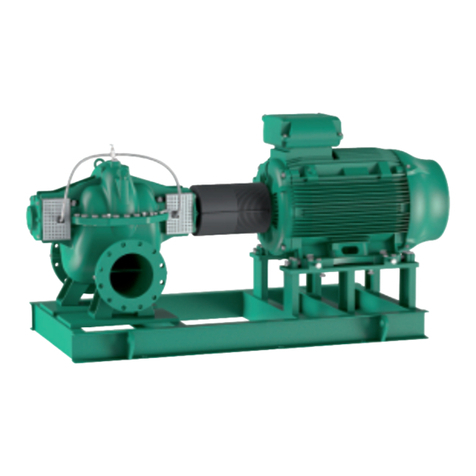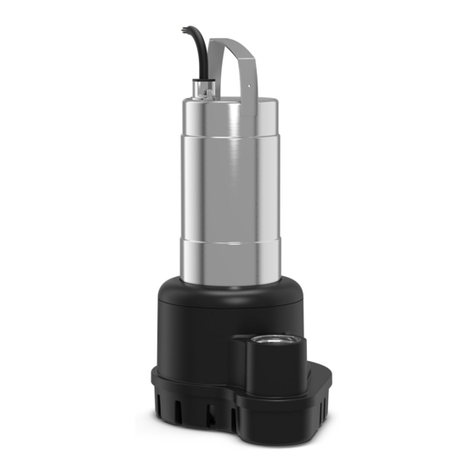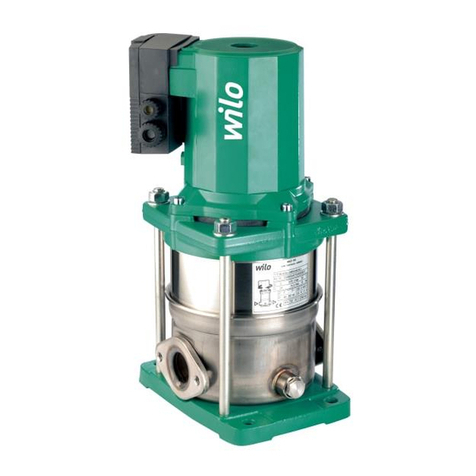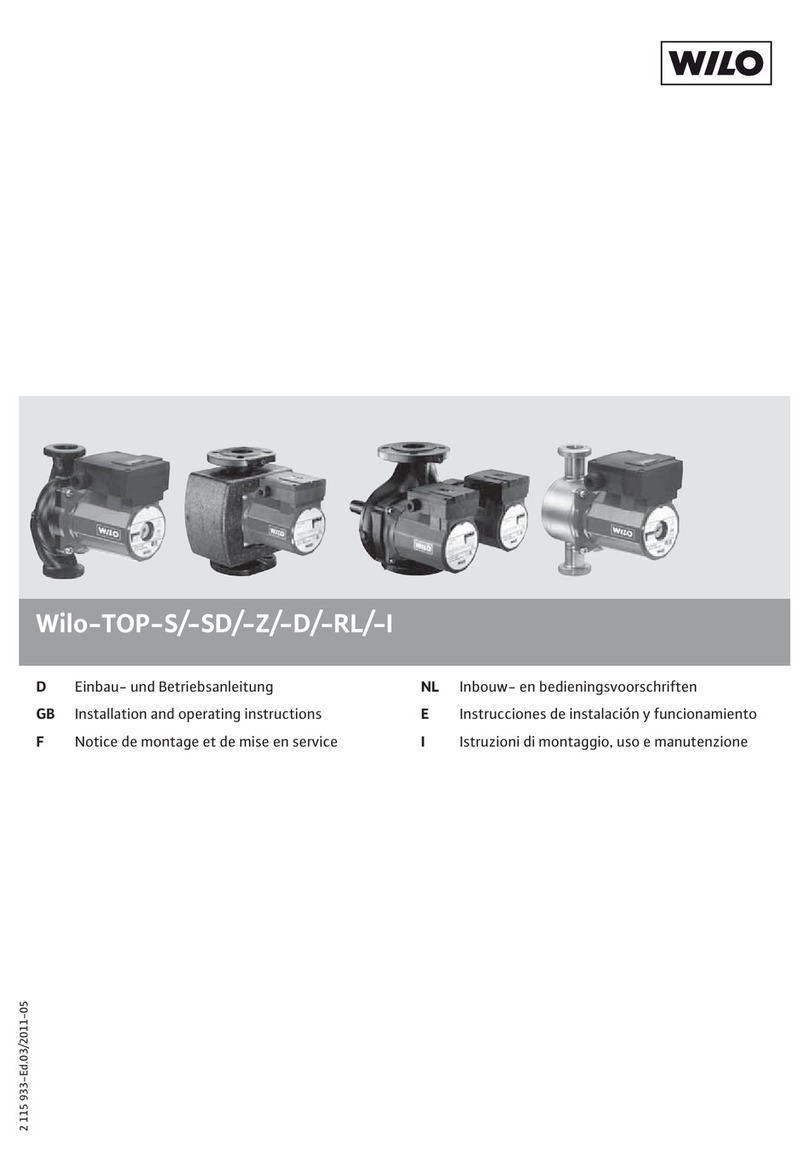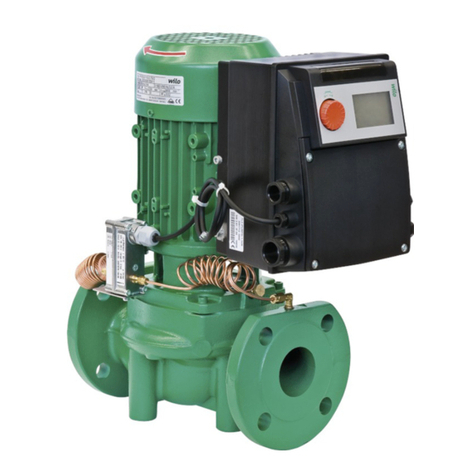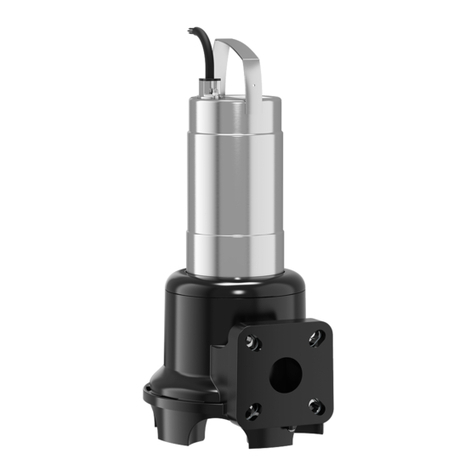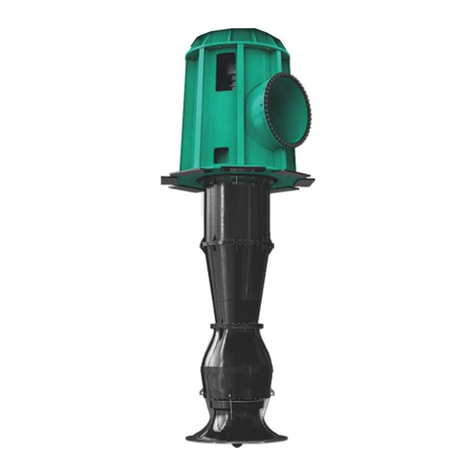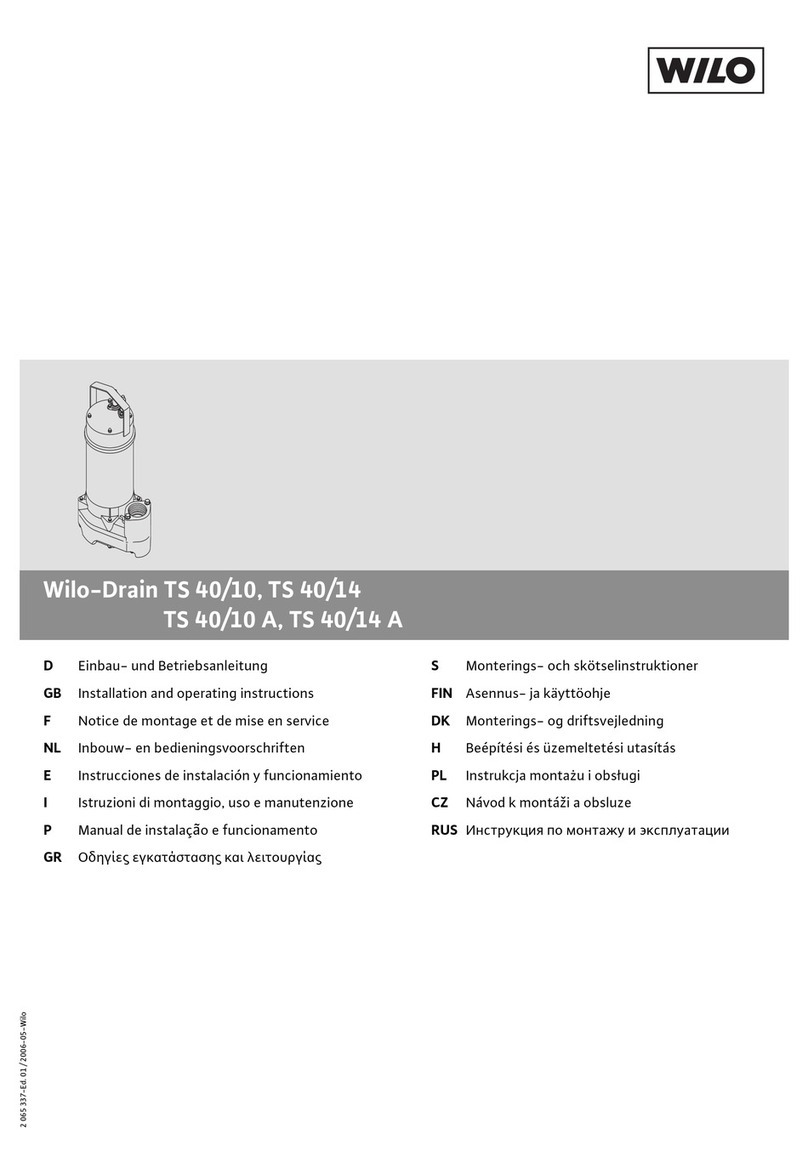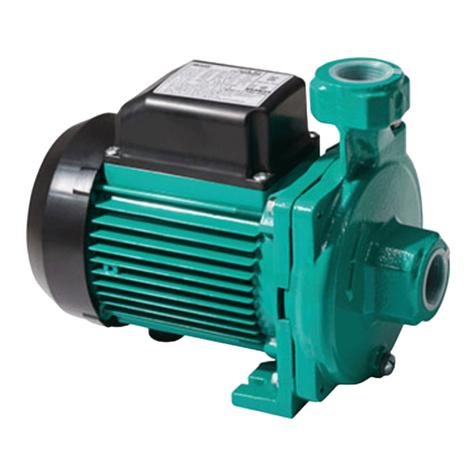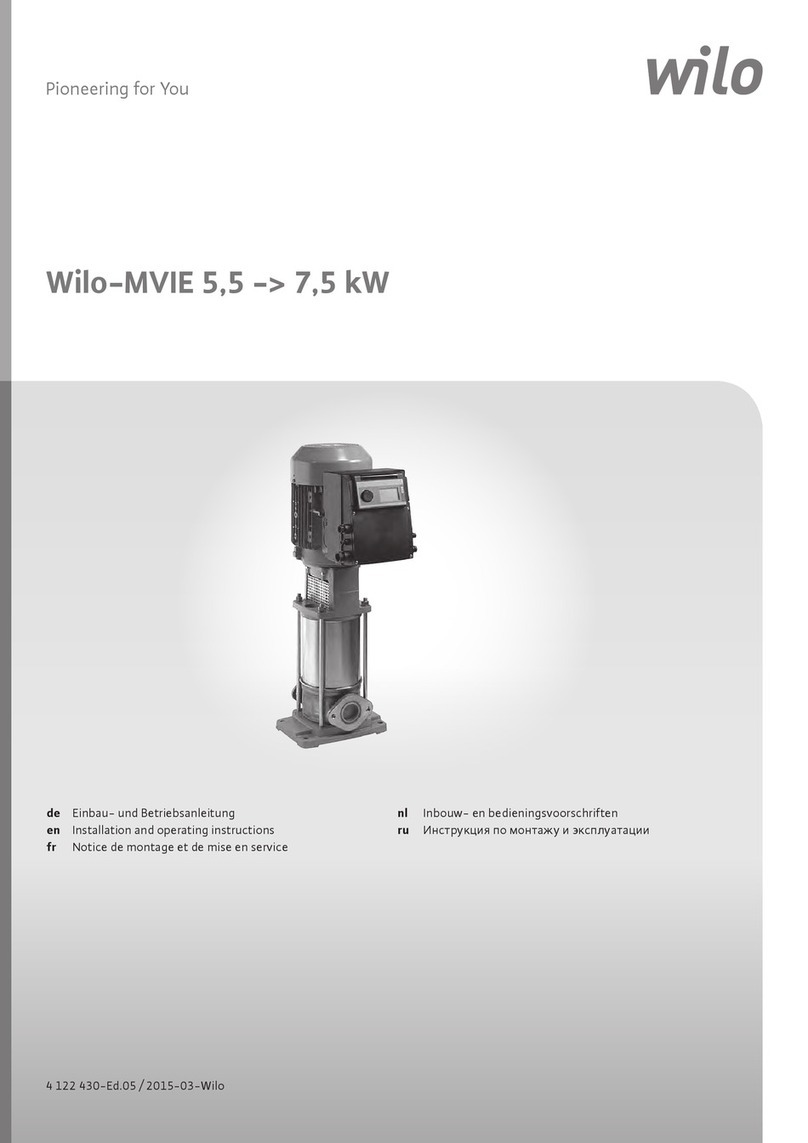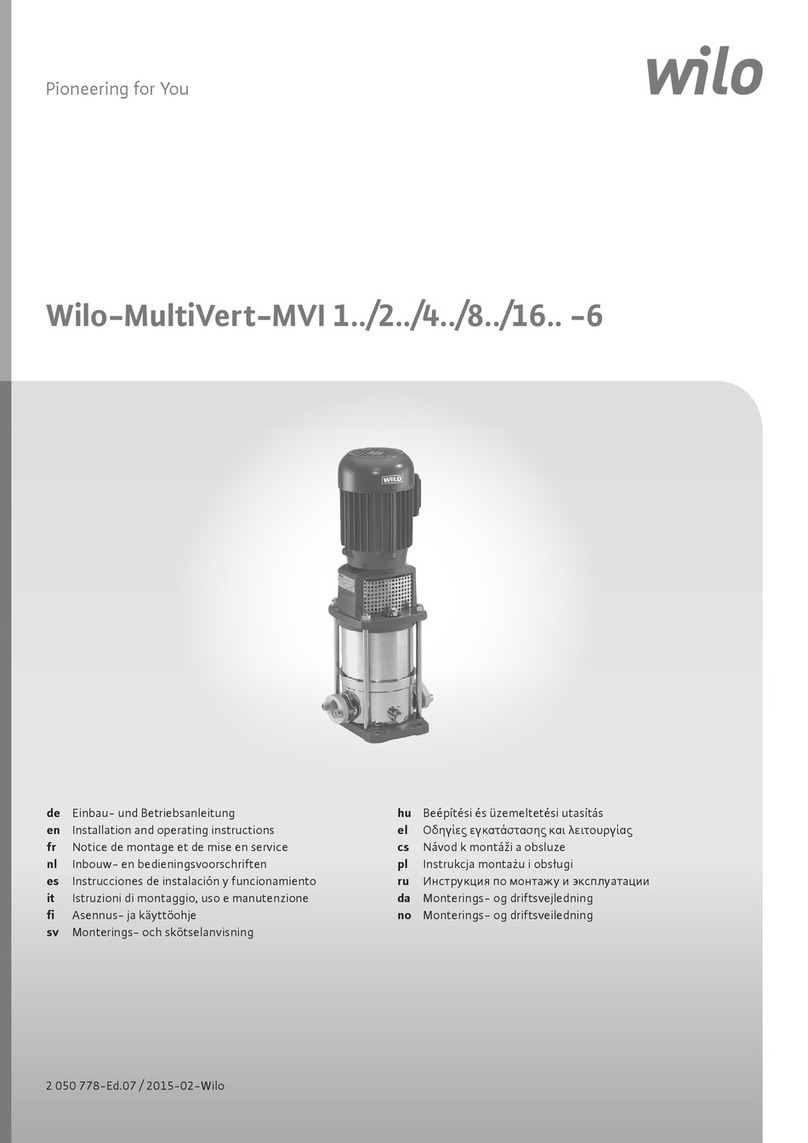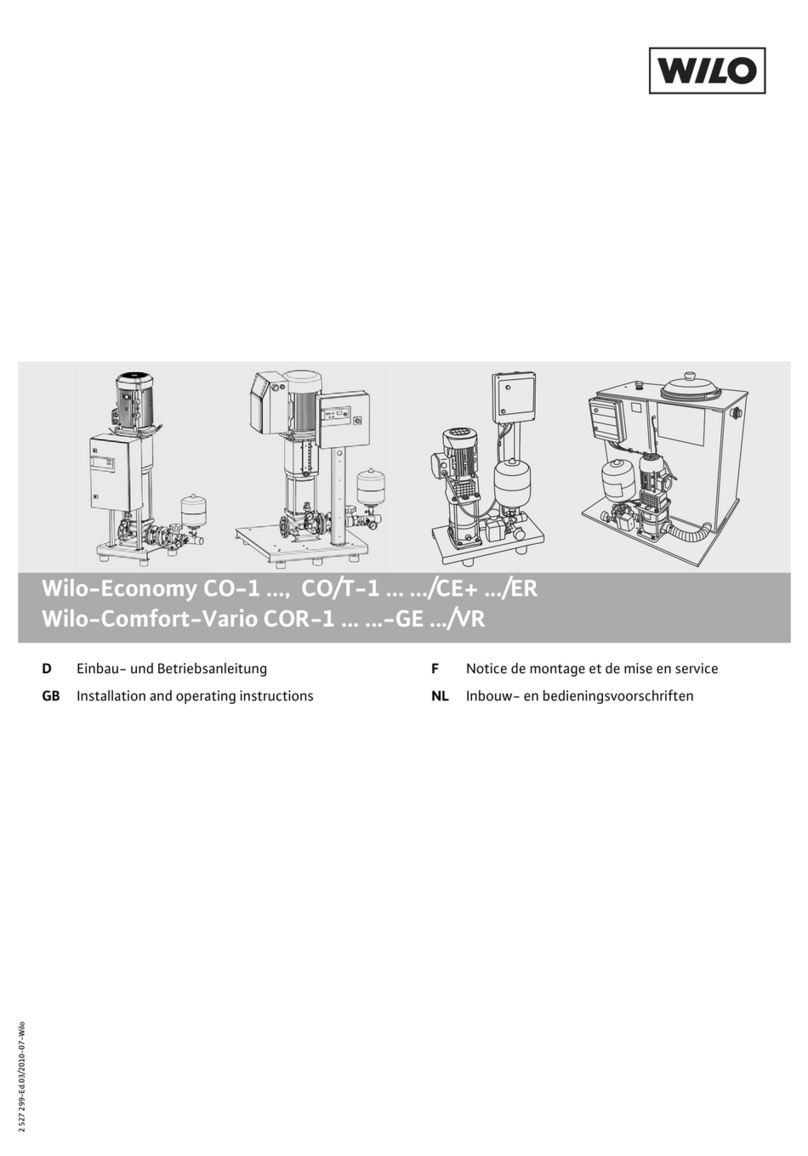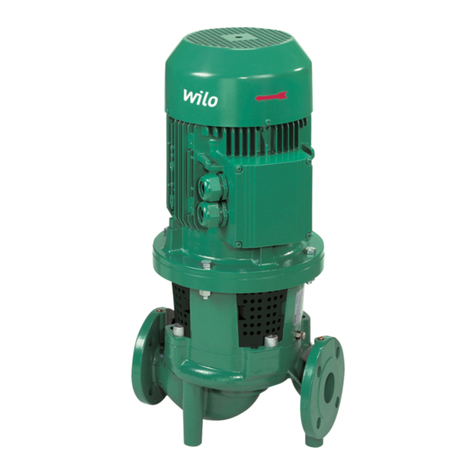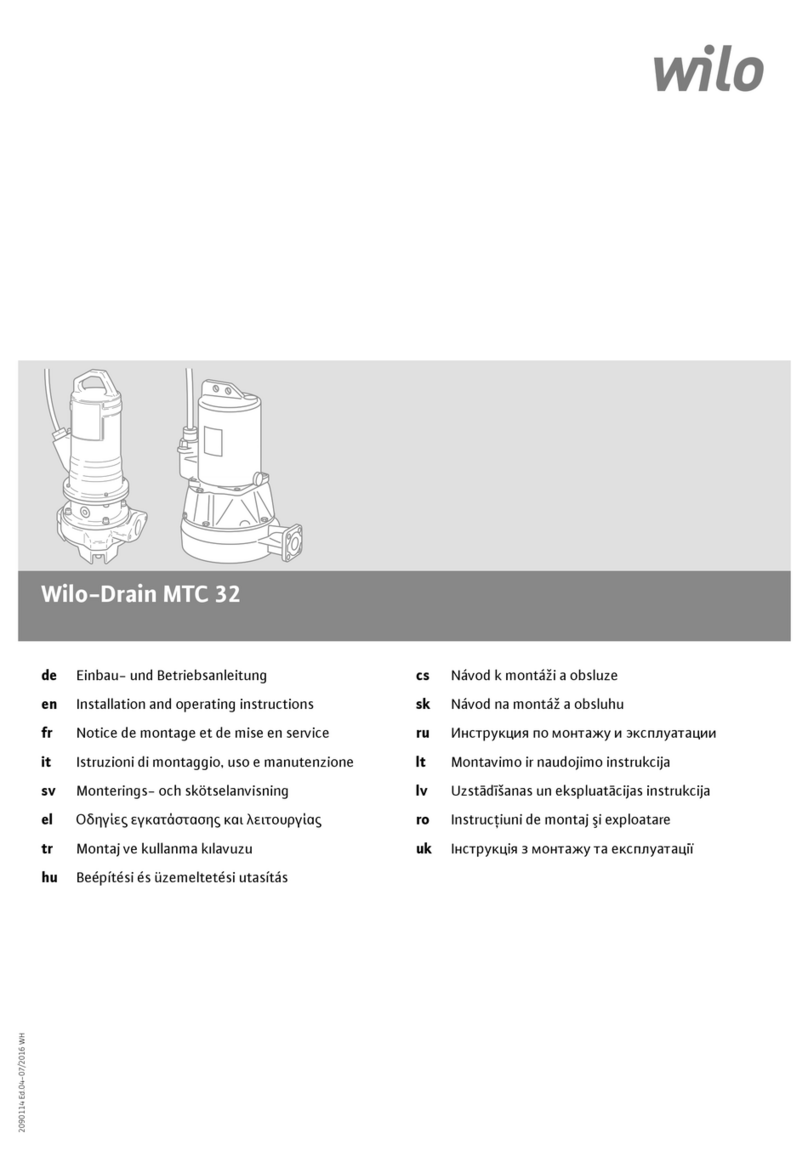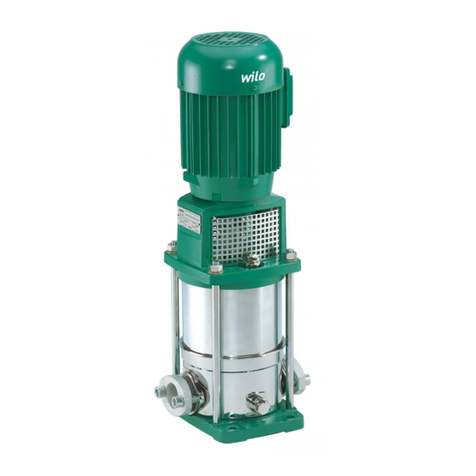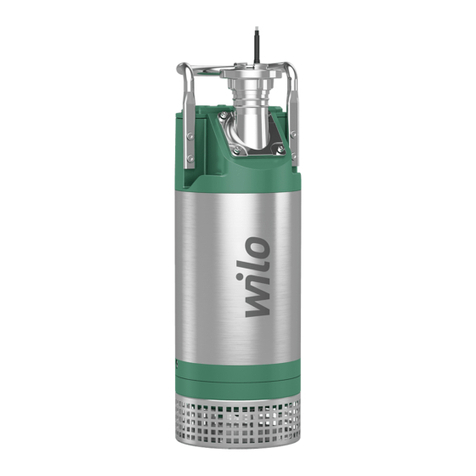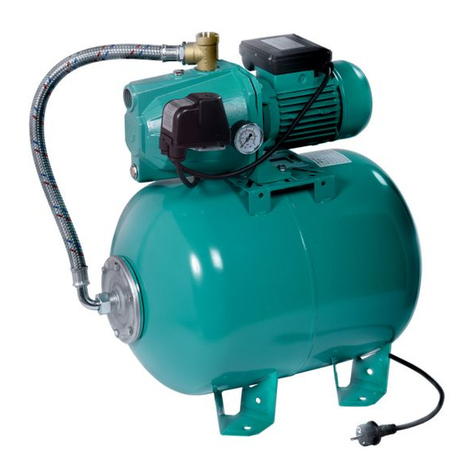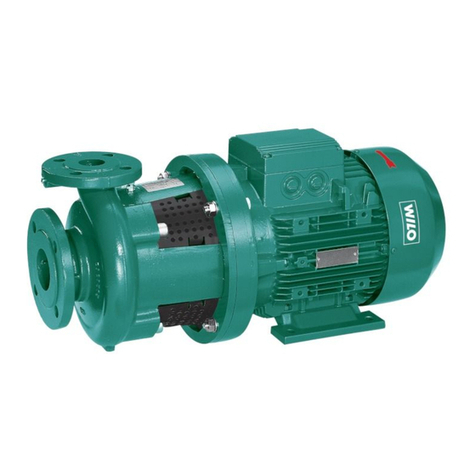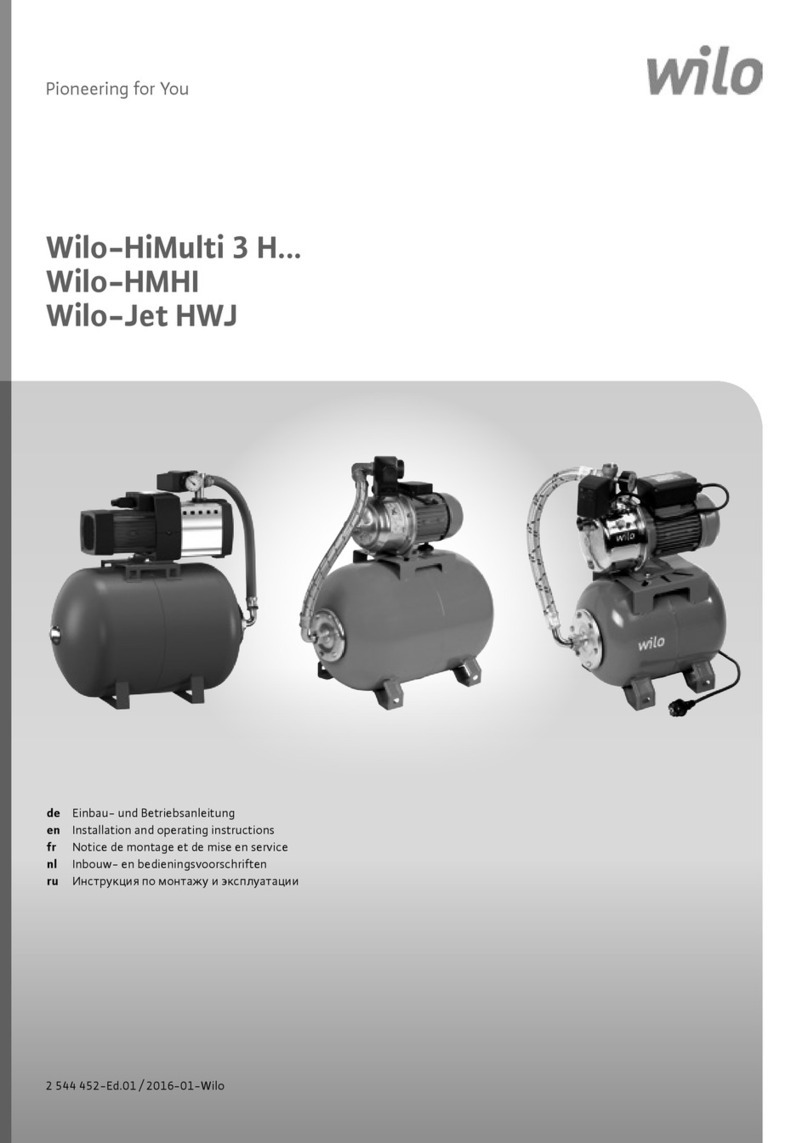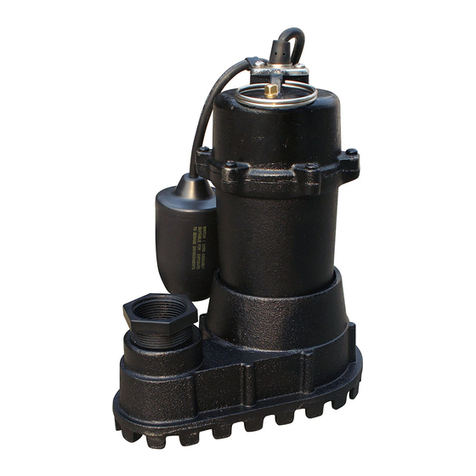
WILO SE 02/2016
English
delivery manifold, 18 and 24 litre capacities (Fig.
1), just beside the booster for higher capacities.
- The existing pipes must be installed free from
stresses. Compensators or flexible connecting
pipes are recommended for this purpose in order
to avoid stresses on the pipe connections and
minimise the transmission of vibrations to the
building installation.
Connection to public water supply
Be sure the installation can withstand the maxi-
mum pump pressure at zero flow plus the public
water mains pressure. Otherwise connect the
pressure relief valve to the booster outlet.
We recommend to install a pressure relief and
regulating valve on the booster inlet, on the
water supply inlet to avoid any pressure varia-
tions at the booster inlet.
Connection on load to a tank
Be sure the installation can withstand the maxi-
mum pump pressure at zero flow plus the public
water mains pressure. Otherwise connect the
pressure relief valve to the booster outlet behind
the tank.
Connection on suction to a tank
Be sure that the losses of head do not exceed the
suction capacity of the pumps. It is recommend-
ed to use a foot-strainer valve with a pipe whose
dimension is equal to or higher than the suction
nominal diameter.
7.4 Electrical connection
WARNING! The electrical connection must be
performed according to the local regulations by
an electrical installation engineer approved by
the local utility.
To make the electrical connection, the corre-
sponding installation and operating instructions
and attached electrical circuit diagrams must be
observed. General points to be considered are
listed below:
• the type of current and voltage of the mains
connection must comply with the data on the
type plate and the circuit diagram of the control
unit.
• as protection measure, the booster must be
earthed according to the regulations (i.e. accord-
ing to the local regulations and circumstances) ;
the connections intended for this purpose are
identified accordingly (see circuit diagram).
Power supply cable
The electric supply cable shall be correctly
dimensioned according to the total booster
power (see type plate).
Connecting the control box on a voltage differ-
ent from the one mentioned in the description is
not possible (see chapter 5.2. technical data).
NOTE: for any further details an electric diagram
is available inside the control box.
ATTENTI N! Do not forget to connect the earth
terminal.
Lack of water protection
An input ON/OFF (250V 2A) (Fig. 5) protects the
booster against lack of water, a pressure switch
(Normally Open) or a float switch shall be con-
nected to this input.
ATTENTI N! Do not apply external voltage to the
terminals.
8. Commissioning
ATTENTI N! Never let the booster run as dry
over a few seconds. Dry running may damage the
mechanical seal.
Before switching on for the first time, check that
the customer's wiring has been done correctly,
particularly the earthing.
ATTENTI N! Tighten all the supply terminals
before starting the booster.
8.1 Tank inflating
With no water in the tank pressurize the tank to
a pressure 0.3 bar lower than the starting pres-
sure of the pumps.
ATTENTI N! Do not exceed the maximum value
of tank first-inflating.
8.2 Filling - Degazing
Connection to public water supply or on load to
a tank
- Check the water supply origin (adequate water
level in the tank).
- Open the booster supply valve to get water
inside.
- Open the filling plugs (Fig. 1, pos. 5) of the
pumps and wait as long as water is getting inside
before closing them again.
- Keep the switch (Fig. 2, pos. 4) on " AND" to
check priming. If need be test the pumps one
after the other.
Connection on suction to a tank
- Close the delivery valve.
- Open the suction valve.
- Screw off the filling plugs and remove them.
- With a funnel placed inside the port, fill in slowly
and completely the pumps and the suction pipes.
- After water and air exit, filling is finished.
- Screw on the filling plugs (Fig. 1, pos. 5).
- Set the switch (Fig. 2, pos. 4) on " AND" to
check priming. If need be test the pumps one
after the other.
8.3 Motor sense of rotation
The electric connection of the pumps to the
control box is performed in the factory.
Nevertheless in case of three-phase version, you
shall check the right sense of rotation as follows:
- Be sure there is water inside the booster.
- Position the pump switches (Fig. 2, pos. 4) on
"OFF".
- Disconnecting switch ON.
7

